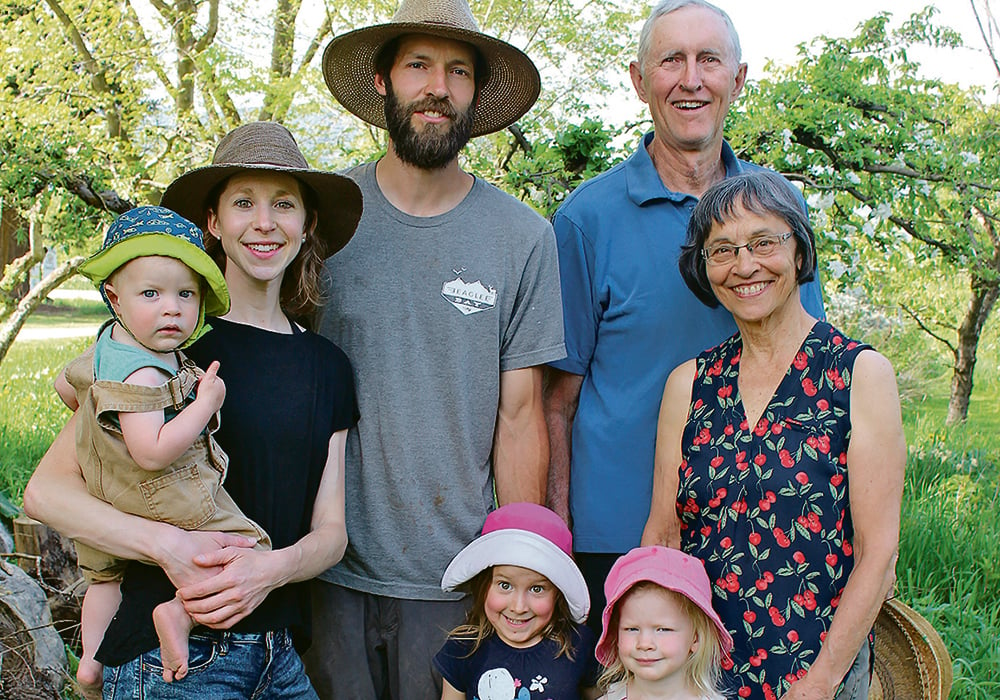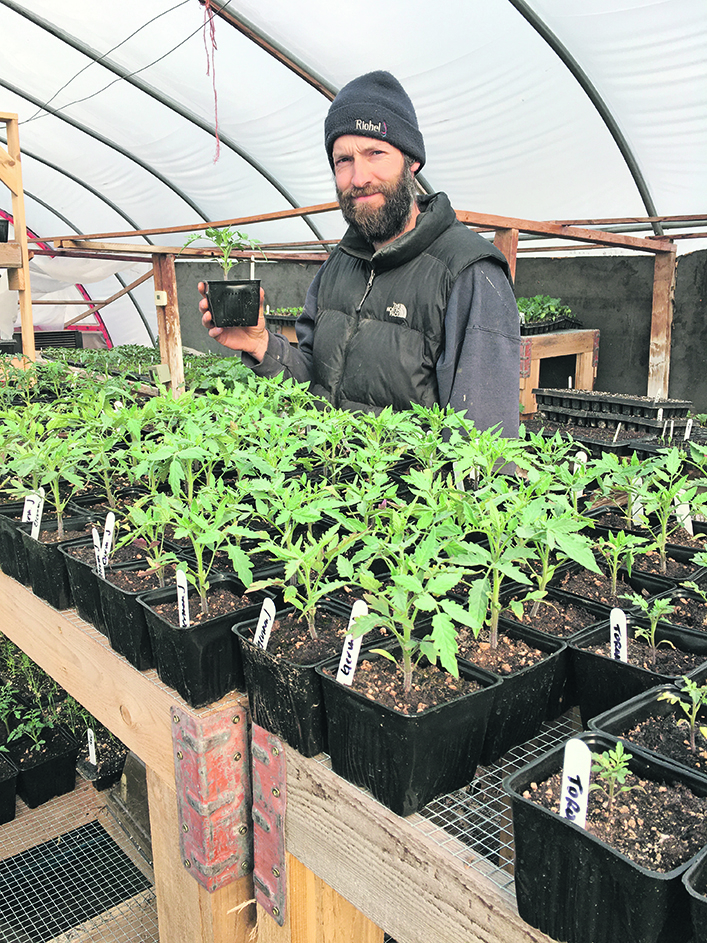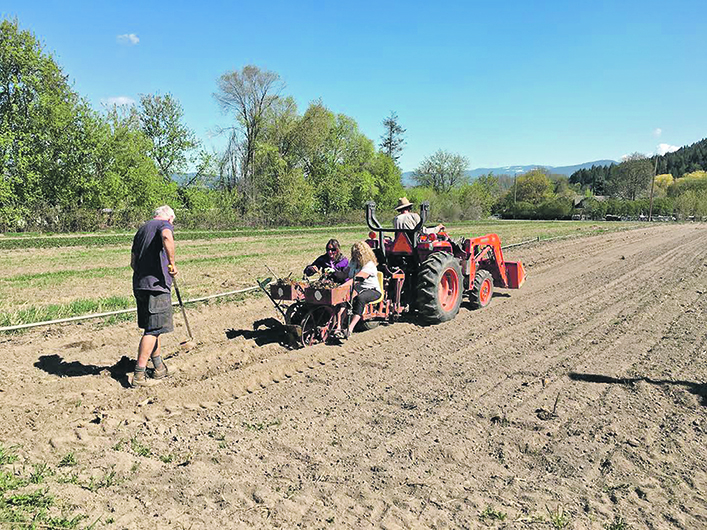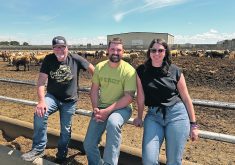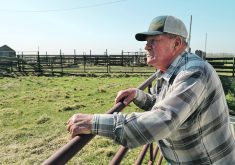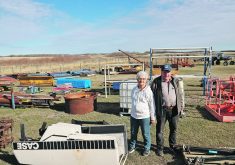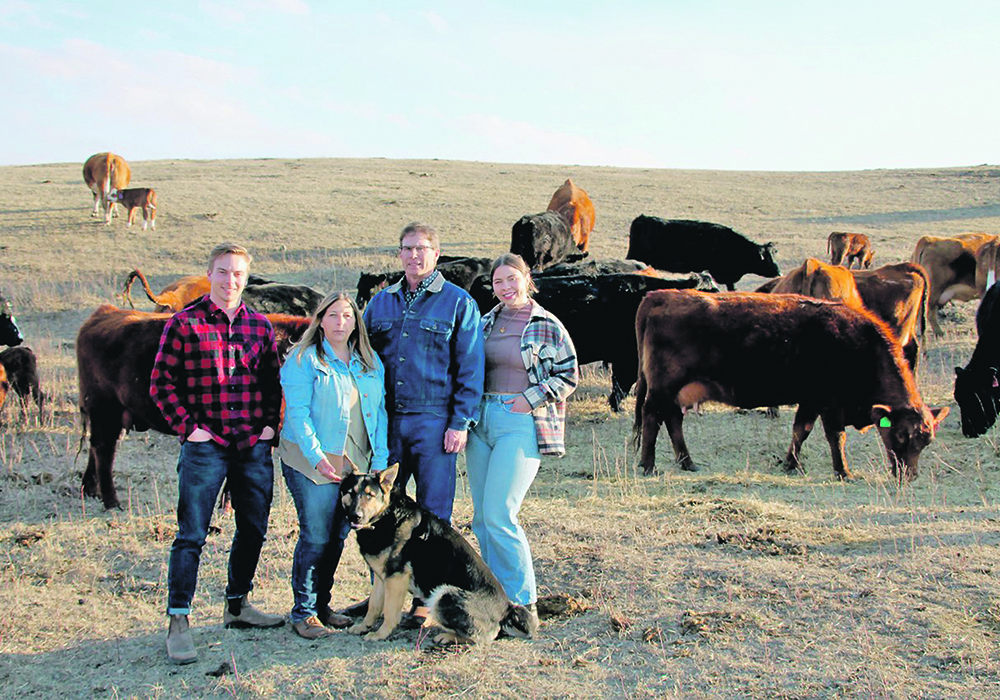Relationship building was key as the older and younger generations took gradual steps toward passing on the farm
When Dan Sexton started work at a fruit and vegetable farm in southern British Columbia, he hoped he would like farming.
Six years later, on March 31, Dan Sexton and his wife, Kat, purchased Pilgrims’ Produce, an organic farm outside Armstrong and know they love to farm.
It took those six years of learning, discovery, discussion and relationship building with owners Rob and Kathryn Hettler before both parties felt comfortable in buying and selling the farm.
“It was definitely the relationship building, up to the sale, that made it possible. If we would have just walked on and offered to buy the farm, it probably wouldn’t have gone very well for either of us. We would have bought it and they would have left because there was no relationship and I wouldn’t have been able to run this farm,” said Sexton.
Read Also

Know what costs are involved in keeping crops in the bin
When you’re looking at full bins and rising calf prices, the human reflex is to hold on and hope for more. That’s not a plan. It’s a bet. Storage has a price tag.
Dan’s first year was as an hourly employee, the second year he made some management decisions. By the third year he and Kat were contract managers hiring employees and profit sharing with the owners. Each year, the decisions and the responsibility and knowledge continued to increase.
“I really got the responsibility on my shoulders pretty quick, but also there was someone there to help out and give the wisdom. It is really hard to figure these things out on the fly.”
The six years of transition between owners seemed to be the right length of time to build the confidence to own and run the organic farm, said Sexton.
“I learned enough, but I know I don’t know everything. I have seen a variety of seasons. Had early seasons, late seasons, last year a few crop failures from cold. I know I am not done yet.”
Finding non-traditional ways to match farmers and non-farmers was the push behind the Young Agrarians B.C. Land Matching Program and accompanying Transition Toolkit for Non-Family Farm Transfer programs.
A 2016 study from the University of Manitoba showed two-thirds of new farmers were not from family farms and didn’t have the built-in skills acquired by growing up on the farm. While the new farmers had enthusiasm, they often had little practical experience and no access to land or capital to buy the land.
“They really needed a resource because they weren’t connected to agrarian communities,” said Darcy Smith, manager of the B.C. Land Matching program.
Smith said when they were building the program, they talked to a lot of current farmers who had extra land or wanted to step back and ensure their land is farmed, but didn’t know how to find the new farmers.
“There was some who didn’t have someone in their family who wanted to take over and wanted to see the legacy of their farm business continue.
“We connect farmers who want to start or expand the farm business with those who have farmland and want to make it available to the farmer.”
The program also helps the parties develop lease agreements and have them reviewed by a lawyer. So far, the program has supported 128 matches and 6,000 acres in B.C.
“Land really is the number one challenge to getting into farming if you don’t come from a family farm background,” she said.
As land prices increase and farmland becomes scarce, especially in the populated areas of southern B.C., more creative solutions were needed to ensure farm transfers continued.
“When we developed the tool kit we were just answering that need. The stories we heard were from farmers seeking creative solutions and tools to build those creative solutions.”
A document that gives both parties a place to start a discussion helped.
Some of the toolkit topics include: setting your vision, assessing feasibility, making a plan, document, Implement, maintain your transition, taxes and regulations, calculating distribution of labour, and profit.
Included on the website are a series of case stories and the different ways the old and new farmers managed to make the transition work.
“People are really thrilled to have something they can sink their teeth into in what can be a really complicated process. It is hard to figure out where to start and where to go. Having a document to start that process and what to do next is really helpful,” said Smith.
While some commodity groups have tools to help young farmers begin farming, there are few tools for small scale, diversified farms that make up much of B.C.
Like the Sextons and Hettlers, building trust is key to a successful transition.
“Farmers are comfortable taking risks, but they want some kind of assurance. Being able to build a relationship with someone before handing over the farm is really important, so you know your legacy is in good hands, or the plan you’ve developed will unfold smoothly and you’ve got a reliable partner in this transition,” said Smith.
Sexton agrees: “We were fairly open with each other with financials and understanding future concerns. For them it was retirement and the cost of living increasing. For us, it was to have a home to invest into instead of just renting. We had lots of meetings and conversations.”
Knowing they wanted to farm, the Sextons put together a business plan using the farm’s financial information. They eventually put together a business plan that was accepted by Farm Credit Canada.
While the relationship between the Sexton and Hettler families was key to the successful sale, Sexton said so was the support for their organic produce by the local community.
“The support we’ve got from our community has been really good and important. Last year, especially with COVID, they didn’t miss a beat. There were less people at the markets, but they were enthusiastic about buying our stuff. They supported this for over 30 years. That is a really big component.”

